Football formations are the tactical backbone of the game, defining how a team positions its players on the pitch. These setups influence both attacking and defensive strategies, as well as a team’s overall approach to the game. In this article, we break down the most common football formations, their strengths, weaknesses, and how they shape match dynamics.
The Importance of Formations
A football formation is much more than a set of numbers; it’s a framework that reflects a team’s style, philosophy, and objectives. Whether it’s a compact defensive setup or a fluid attacking system, the choice of formation dictates how players interact, control space, and exploit the opposition.
Formations are essential because they provide structure to the team. This structure ensures that players understand their roles and responsibilities, creating cohesion on the pitch. A well-organized formation can help:
- Control Space: Formations allow teams to manage the space on the field, both offensively and defensively. For example, a 1-4-3-3 spreads players across the width of the pitch, while a 1-4-4-2 ensures compactness in central areas.
- Exploit Weaknesses: By analyzing the opponent’s setup, managers can use specific formations to exploit gaps or weaknesses. For instance, playing with three central midfielders against a two-man midfield can create numerical advantages centrally, giving the team more control in possession.
- Adapt to Game States: Different formations are better suited to different scenarios. A team chasing a goal might switch to a more attacking shape like a 1-3-4-3, while one protecting a lead might opt for the solidity of a 1-5-3-2.
Beyond the numbers, the execution of a formation depends heavily on the players’ understanding and the manager’s tactical instructions. A well-drilled team can switch between formations seamlessly, adapting to the flow of the game and the strengths of the opposition.
Additionally, formations are a reflection of football’s evolution over time. From the rigid WM formation of the early 20th century to the fluid, positionless football of today, formations have continually adapted to new tactical ideas and player capabilities. Understanding the importance of formations offers insight into the strategic depth of the sport.
Common Football Formations
1-4-4-2
One of the most traditional formations, the 1-4-4-2 consists of four defenders, four midfielders, and two forwards.
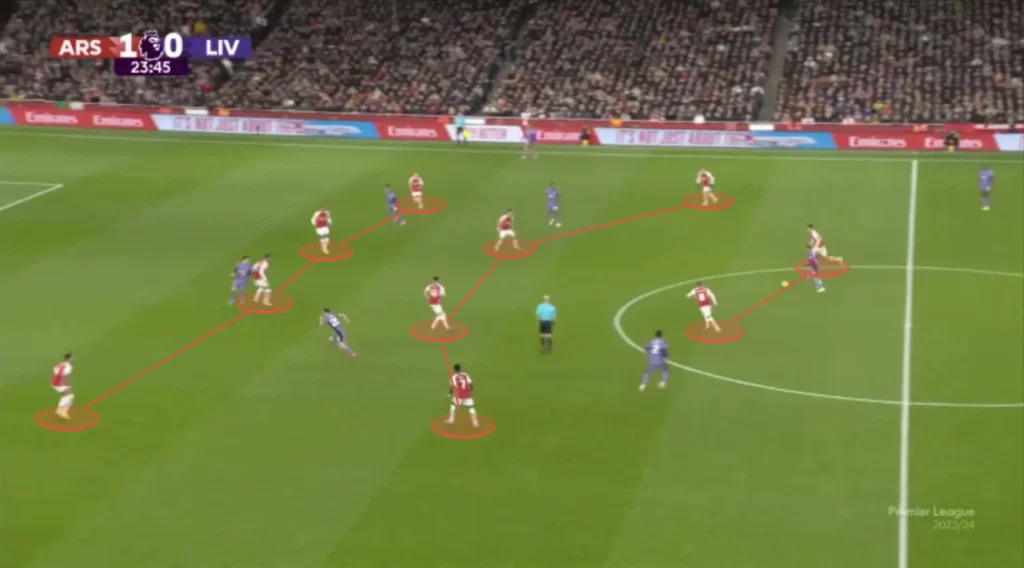
Strengths:
- Balanced structure for both attack and defense.
- Simplifies roles for players.
- Wide midfield provides support for both fullbacks and wingers.
Weaknesses:
- Can be outnumbered in midfield by modern formations.
- Relies heavily on disciplined wide players to track back.
The 1-4-4-2 was famously used by Sir Alex Ferguson during Manchester United’s dominant years and remains a staple for teams favoring simplicity and balance.
1-4-3-3
A dynamic and versatile setup, the 1-4-3-3 features four defenders, three midfielders, and three forwards.
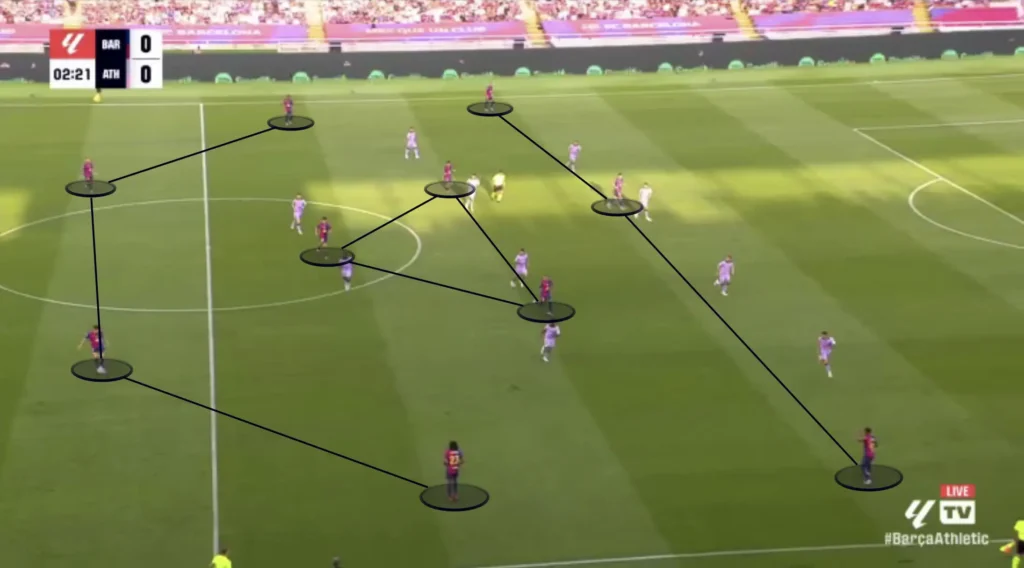
Strengths:
- Provides width through wingers.
- Overloads midfield with three central players.
- Ideal for high pressing and quick transitions.
Weaknesses:
- Requires high work rate from midfielders and wingers.
- Vulnerable to counterattacks if fullbacks push too high.
This formation has been popularized by possession-based teams like Pep Guardiola’s Barcelona and Manchester City, emphasizing ball control and attacking fluidity.
1-3-5-2
The 1-3-5-2 formation employs three central defenders, five midfielders (including wing-backs), and two strikers.
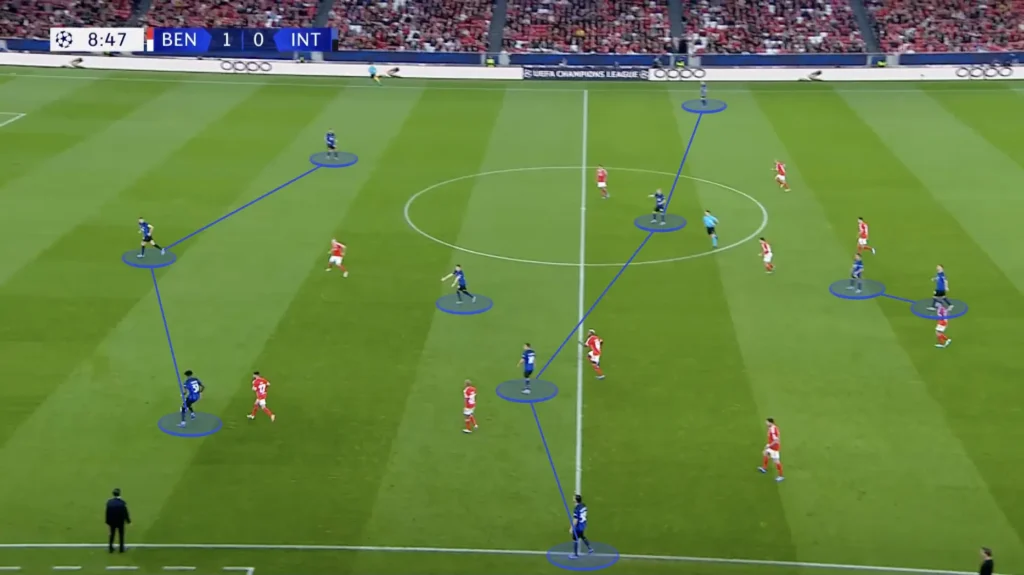
Strengths:
- Wing-backs provide width and defensive cover.
- Overloads midfield for better control.
- Two strikers maintain a consistent goal threat.
Weaknesses:
- Requires highly fit wing-backs to cover both ends of the pitch.
- Can leave spaces in wide defensive areas.
Antonio Conte’s title-winning Chelsea side in 2016/17 showcased the effectiveness of this formation, particularly in counterattacking scenarios.
1-4-2-3-1
A modern and adaptable formation, the 1-4-2-3-1 consists of four defenders, two defensive midfielders, three attacking midfielders, and one striker.
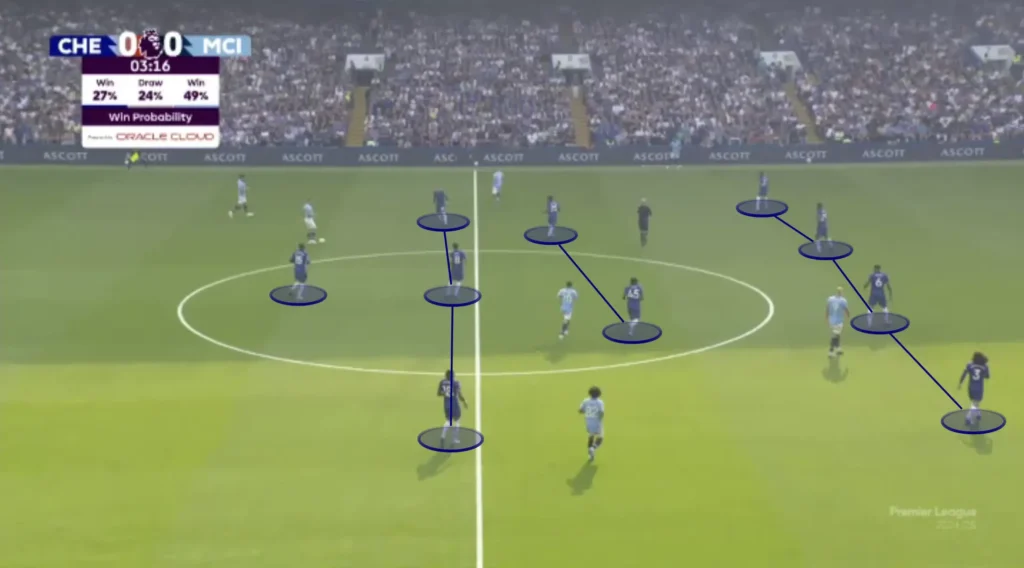
Strengths:
- Offers defensive solidity with two holding midfielders.
- Provides creativity through the advanced midfield trio.
- Flexible for both attacking and defensive setups.
Weaknesses:
- Can isolate the lone striker if support is lacking.
- Relies heavily on the central attacking midfielder to link play.
This formation is a favorite among managers like José Mourinho for its balance and adaptability.
1-3-4-3
The 1-3-4-3 uses three central defenders, four midfielders (with wide players acting as wing-backs), and three forwards.
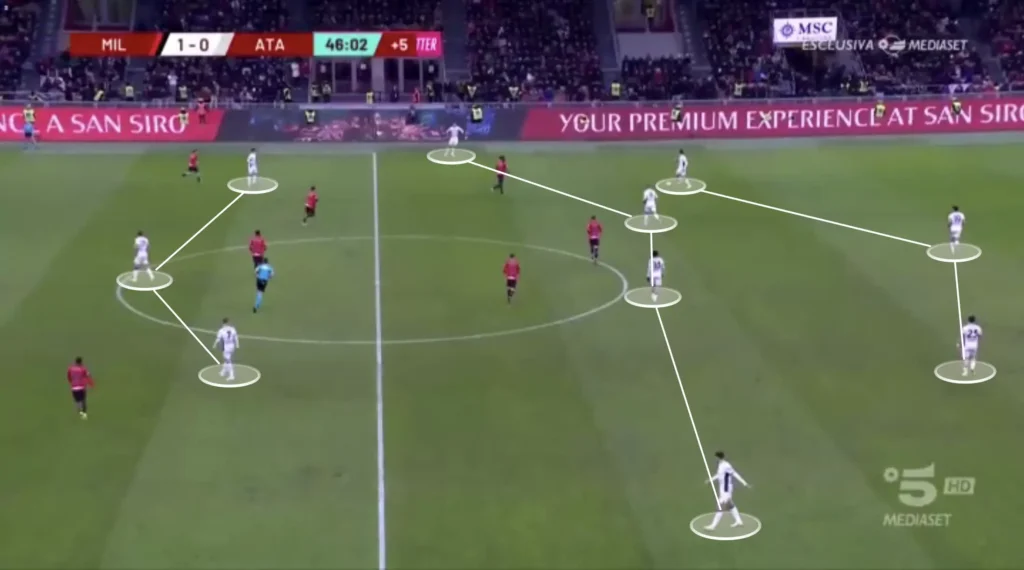
Strengths:
- Overloads attacking areas with a front three.
- Wing-backs provide width while maintaining midfield strength.
- Solid defensive base with three central defenders.
Weaknesses:
- Demands high energy from wing-backs.
- Vulnerable to crosses if wing-backs are out of position.
Ruben Amorim’s Manchester United and Roberto De Zerbi’s Olympique Marseille have effectively utilized this formation to create attacking overloads and dominate possession.
Adapting Formations in Modern Football
Modern football has evolved beyond rigid formations. Managers now prioritize flexibility, instructing players to switch roles and positions depending on the phase of play. This adaptability is a response to the dynamic nature of the game, where transitions between attack and defense happen rapidly.
For instance, a team starting in a 1-4-3-3 may transition to a 1-2-3-5 in possession. In this scenario, fullbacks push forward to join the midfield, while wingers move higher to create a five-man attack. Similarly, out of possession, the same team might drop into a compact 1-4-4-2 shape, ensuring defensive solidity and minimizing gaps between the lines.
Adaptation also depends on player roles. Managers like Pep Guardiola and Jürgen Klopp often use “inverted fullbacks” or “false nines” to disrupt traditional positional play. This fluidity allows players to exploit spaces that rigid formations might overlook, creating a tactical edge.
Another critical aspect of modern formations is the use of analytics and data. Coaches analyze patterns in opposition play to determine the most effective formation for a given match. Teams might adjust their shape multiple times during a game to respond to changing circumstances, such as an opponent switching tactics or a key player being substituted.
In essence, adapting formations in modern football requires a blend of tactical knowledge, player versatility, and strategic planning. It’s not just about the numbers on paper but about how those numbers come to life on the pitch, driven by the players’ intelligence and the manager’s vision.
Conclusion
Football formations remain a critical aspect of the sport, offering a blueprint for how teams approach the game. Whether it’s the traditional 1-4-4-2, the dynamic 1-4-3-3, or the flexible 1-4-2-3-1, understanding these setups provides insight into the tactical battle between managers. As the game continues to evolve, so too will the ways formations are used to gain an edge on the pitch.
